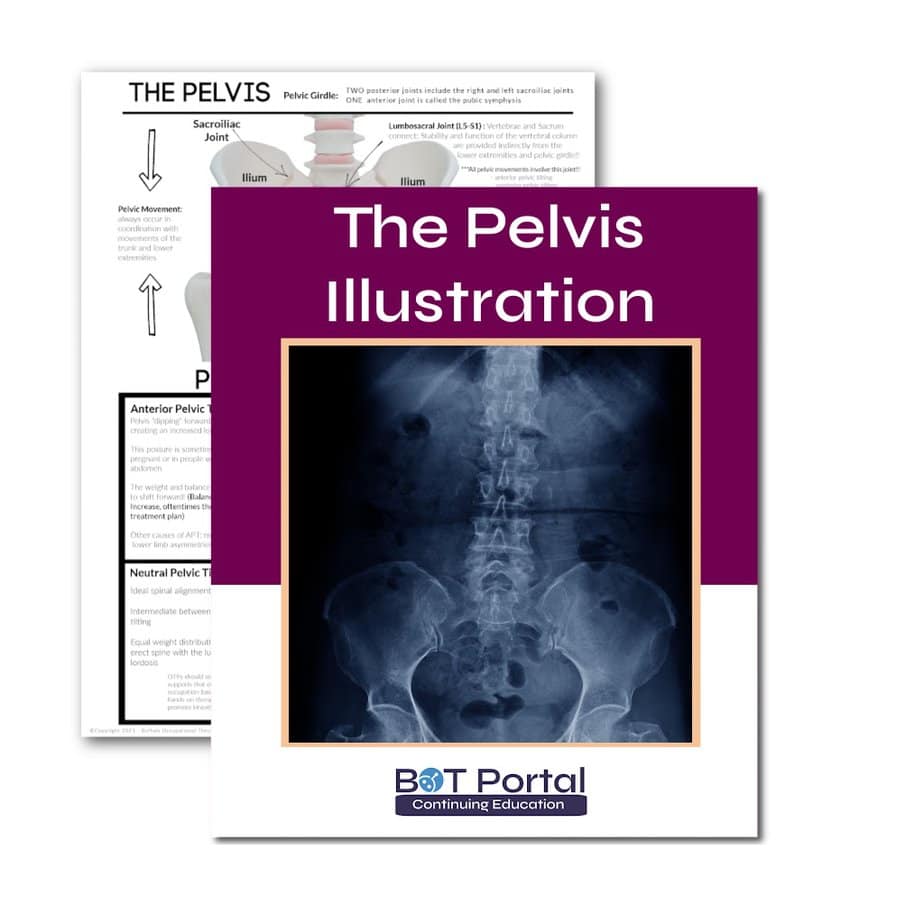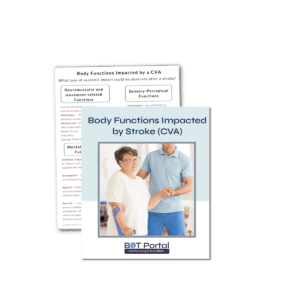Description
The Pelvis Illustration
Note: This pelvis illustration is to inform daily practice. Many research-supported intervention trajectories are shown to promote remediation, and everyone is different! Do your research! This is merely a tool in your toolkit. 🙂
A printout illustration of the pelvis serves as a valuable educational tool in occupational therapy, providing visual representation and anatomical context for understanding the importance of pelvic alignment and stability in functional movement and everyday activities.
Here’s why addressing and educating patients on the pelvis is crucial in occupational therapy:
- Foundation of Stability: The pelvis serves as the foundation of the body’s stability and support, connecting the spine to the lower limbs and providing a stable base for dynamic movement. Proper alignment and stability of the pelvis are essential for maintaining balance, coordination, and efficient movement during functional tasks such as sitting, standing, walking, and lifting.
- Core Stability and Postural Control: The muscles surrounding the pelvis, including the core muscles, play a key role in providing stability and support to the spine and pelvis. Occupational therapy focuses on strengthening these muscles and promoting core stability to improve postural control, reduce the risk of injury, and enhance overall functional performance.
- Functional Mobility and Independence: Pelvic alignment and stability are essential for performing activities of daily living independently and efficiently. Occupational therapy aims to educate patients on proper body mechanics, posture, and movement patterns to optimize pelvic alignment and enhance functional mobility during tasks such as transferring, dressing, toileting, and reaching.
- Pain Management and Injury Prevention: Poor pelvic alignment and stability can contribute to musculoskeletal imbalances, biomechanical dysfunctions, and chronic pain conditions. Occupational therapy interventions focus on addressing underlying biomechanical issues, correcting postural abnormalities, and implementing ergonomic strategies to reduce pain, prevent injuries, and improve overall well-being.
- Adaptive Equipment and Assistive Devices: In some cases, individuals may require adaptive equipment or assistive devices to support pelvic alignment and facilitate functional mobility. Occupational therapists assess patients’ needs and recommend appropriate devices such as orthotics, cushions, and mobility aids to optimize pelvic stability and enhance participation in daily activities.
By addressing and educating patients on the importance of pelvic alignment and stability in occupational therapy, therapists can empower individuals to take an active role in improving their functional movement, enhancing their quality of life, and promoting long-term health and well-being.
Other helpful links:
Check out BOT Portal: Resource Site for Occupational Therapy Students and Practitioners




